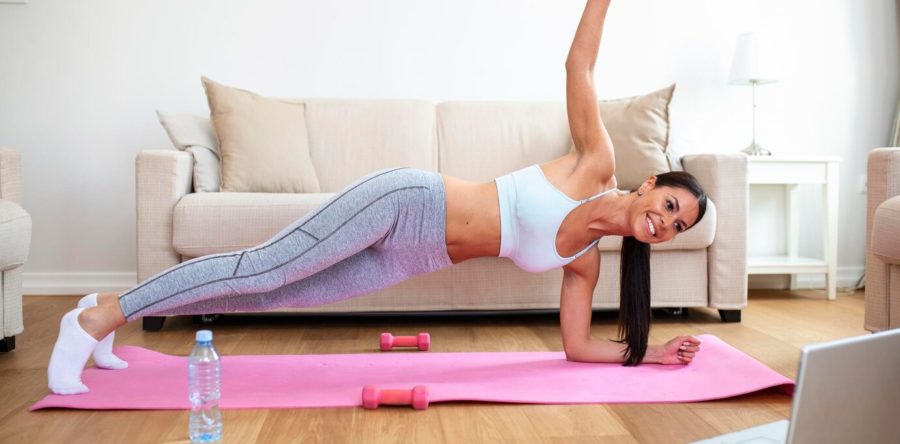Pelvic floor muscles play a vital role in supporting your pelvic organs, maintaining urinary and bowel control, and even enhancing sexual function. However, factors such as aging, childbirth, and obesity can weaken these muscles, leading to issues like urinary incontinence, pelvic organ prolapse, and discomfort. At Whitehorse Physiotherapy, we understand the importance of maintaining a strong, healthy pelvic floor, and we're eager to help you achieve that goal.
In this article, we've curated a list of the top eight exercises to strengthen your pelvic floor muscles. These simple yet effective exercises, carefully explained with step-by-step instructions, make it easy for you to incorporate them into your daily routine. By regularly practicing these exercises, you can help maintain good pelvic health, alleviate symptoms associated with weakened pelvic floor muscles, and improve your overall well-being.
Pelvic Floor Anatomy and Function
Before diving into the exercises, it's essential to understand the anatomy and function of the pelvic floor muscles. The pelvic floor consists of a group of muscles and ligaments that form a support sling at the base of the pelvis, spanning from the pubic bone in the front to the tailbone at the back. These muscles play a crucial role in supporting the bladder, uterus, rectum, and other pelvic organs, as well as maintaining urinary and bowel control. A strong and well-functioning pelvic floor is vital for overall pelvic health and can help minimize issues such as incontinence, pelvic organ prolapse, and discomfort during sex.
1. Kegel Exercises
Kegel exercises, named after their developer, Dr. Arnold Kegel, are the most well-known and widely recommended exercises for strengthening the pelvic floor muscles. These exercises involve contracting and relaxing the pelvic floor muscles in a specific pattern. Before beginning Kegel exercises, it's essential to identify and isolate the correct muscles:
- Begin by sitting or lying down in a comfortable position.
- To locate the pelvic floor muscles, imagine stopping your urine flow midstream. The muscles required for this action are the ones you'll be targeting.
- Contract the pelvic floor muscles, hold for five seconds, then relax for five seconds.
- Repeat this process ten times for one set.
- Aim for three sets of ten repetitions daily.
2. Squats
Squats are not only great for building leg and glute strength, but they also engage and strengthen the pelvic floor muscles:
- Stand with your feet shoulder-width apart and toes pointing slightly outward.
- Keep your back straight and bend your knees while lowering your hips as if sitting in a chair.
- Lower yourself until your thighs are parallel to the ground.
- Press into your feet and return to a standing position while engaging your pelvic floor muscles.
- Perform three sets of ten repetitions.
3. Bird Dog
The bird dog exercise engages the core and pelvic floor muscles while improving balance and stability:
- Begin on your hands and knees, with your hands directly below your shoulders and your knees below your hips.
- Engage your core and pelvic floor muscles.
- Simultaneously lift and extend your right arm and left leg, creating a straight line from your fingertips to your heel.
- Hold for five seconds and then slowly return to the starting position.
- Repeat on the opposite side.
- Perform three sets of ten repetitions on each side.
4. Glute Bridge
The glute bridge activates the glutes, hamstrings, and pelvic floor muscles while strengthening the lower back:
- Lie on your back with your knees bent and feet flat on the ground, hip-width apart.
- Engage your core and pelvic floor muscles.
- Press into your heels and lift your hips off the ground until your body forms a straight line from your shoulders to your knees.
- Hold this position for five seconds while maintaining engagement of the pelvic floor muscles.
- Lower your hips to return to the starting position.
- Perform three sets of ten repetitions.
5. V-sit
The V-sit works the abductor muscles and promotes core stability while targeting the pelvic floor muscles:
- Sit on the floor with your knees bent and feet flat on the ground.
- Lean back slightly and engage your core and pelvic floor muscles.
- Raise your legs off the ground, maintaining a bent-knee position.
- With your arms extended and parallel to the ground, reach for your ankles for added balance.
- Hold this position for five to ten seconds while maintaining engagement of the pelvic floor muscles.
- Perform three sets of ten repetitions.
6. Pelvic Tilt
The pelvic tilt helps improve pelvic alignment and targets the deep core and pelvic floor muscles:
- Lie on your back with your knees bent and feet flat on the ground, hip-width apart.
- Engage your core and pelvic floor muscles.
- Press your lower back gently into the ground by tilting your pelvis upward.
- Hold this position for five seconds while maintaining engagement of the pelvic floor muscles.
- Return to the starting position.
- Perform three sets of ten repetitions.
7. Leg Lifts
Leg lifts work the core and hip flexor muscles while engaging the pelvic floor:
- Lie on your back with both legs extended on the ground.
- Slowly raise one leg up towards the ceiling while keeping the opposite leg extended and in contact with the ground.
- Maintain engagement of your core and pelvic floor muscles during the leg lift.
- Slowly lower your leg back to the starting position.
- Perform three sets of ten repetitions with each leg.
8. Clamshell
The clamshell exercise targets the hip abductor and pelvic floor muscles:
- Lie on your side with your legs bent at a 90-degree angle and your feet together.
- Rest your head on your lower arm and place your upper hand on your hip.
- Keeping your feet together, slowly lift the top knee as high as comfortable, then lower it back down.
- Maintain engagement of the core and pelvic floor muscles during the exercise.
- Perform three sets of ten repetitions on each side.
Incorporating these eight exercises into your daily routine can help strengthen your pelvic floor muscles, improve overall pelvic health, and alleviate symptoms associated with weakened pelvic floor muscles. However, if you have concerns about your pelvic health or are unsure about proper exercise techniques, it's always best to consult with a physiotherapist or pelvic health specialist for guidance and personalized recommendations.
Remember, consistency is key – performing these exercises regularly can contribute to improved pelvic health and well-being over time.
Invest in Your Pelvic Health with Whitehorse Physiotherapy
Maintaining and strengthening your pelvic floor muscles is crucial for overall pelvic health and well-being. By incorporating these exercises into your daily routine, you can proactively improve your urinary and bowel control, reduce the risk of pelvic organ prolapse, and enhance your sexual function.
For the best results and individualized advice, consider consulting with a physiotherapist or pelvic health specialist at Whitehorse Physiotherapy. Our skilled and dedicated professionals can assess your pelvic health and design a personalized exercise plan tailored to your specific needs. By taking control of your pelvic health, you can invest in your long-term well-being and enjoy a better quality of life. Ready to enhance your pelvic health? Contact Whitehorse Physiotherapy today to schedule an appointment with our physiotherapist in Whitehorse and embark on your journey toward a strong and healthy pelvic floor.





